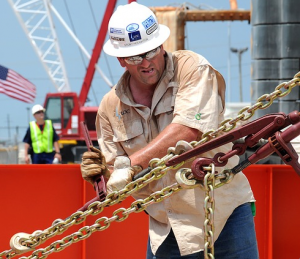Denver — US operators captured a record percentage of associated gas in oil-rich US plays in 2020 as new infrastructure combined with lowered output, while natural gas achieved the strongest gas-to-oil price ratios recorded in years.
In 2020, US producers were able to reduce their flaring emissions substantially, according to observed satellite Visible Infrared Imaging Radiometer Suite data by the National Oceanic and Atmospheric Administration. The amount of radiant heat observed due to flaring in the US in 2020 equated to 110,759 watts. This was a dramatic decline from the 215,042 watts recorded in 2019.
Significant strides were made this year by Texas and New Mexico operators with regards to flaring, as depressed new well activity helped operators limit strong initial flare rates from recently brought online horizontal wells. This occurred despite the fact that permits in Texas allow operators to flare all their gross gas for the first 90 days with limited to no regulation.
Another key 2020 trend observed in the Permian Basin was the ample pipeline takeaway available for operators to transport their gas toward the Gulf. This was a stark contrast compared to 2019 when regional constraints kept Waha hub at or near a negative pricing environment.
In the Bakken Shale, the North Dakota Oil & Gas Commission set a capture rate of 91% which operators needed to accomplish by November 2020. This tougher regulation forced operators to likely meet this goal in December, as satellite observations show the lowest radiant heat observed metric since VIIRS began recording in January 2018.
While the 91% goal seemed difficult to obtain in 2019 when operators flared an average of 19% of all gas produced, the industry as a whole met or bested that goal in every month from June through October, according to data by the North Dakota Industrial Commission. In October, producers captured 93% of the 2.87 Bcf/d of gross gas produced during the month. Just one year prior, companies captured 84% of 3.05 Bcf/d.
In November, the price of natural gas delivered to Northern Border Pipeline at Watford City increased 73 cents to $2.31/Mcf. This resulted in an oil-to-gas price ratio of 16 to 1. One year prior, when Watford City hub was priced roughly the same, the ratio was 23 to 1 due to higher oil prices. Even though the Watford City hub has declined to average $1.95/Mcf in December the ratio is 22 to 1.
Although new gas gathering and processing facilities helped producers meet state goals, production declines stemming from well shut ins and lower rates of drilling and completion also played a role.
“Drilling permit activity is slower and more volatile due to oil price volatility,” said Lynn Helms, director of the North Dakota Department of Mineral Resources. “Operators continue to maintain a permit inventory of approximately 12 months and some experienced drilling rig and completion crews … All in all, though, it was a pretty terrible year for the industry.”
In November, the state of Colorado officially banned the practice of venting and flaring at the wellhead, primarily affecting producers in the Denver-Julesburg Basin. The regulatory change could be utilized by other state regulators looking to stabilize their region’s flare rate, according to S&P Global Platts Analytics.
And in Texas’ Eagle Ford Shale, since the region’s April 2020 flaring lows, operators have slowly started flaring more volumes, as the basin’s strong gas window has led to increased activity and once again boosted flaring volumes. Rigs in the Eagle Ford have more than tripled in the past three months, climbing from nine in September to 30 as of Dec. 23, according to Platts Analytics.

